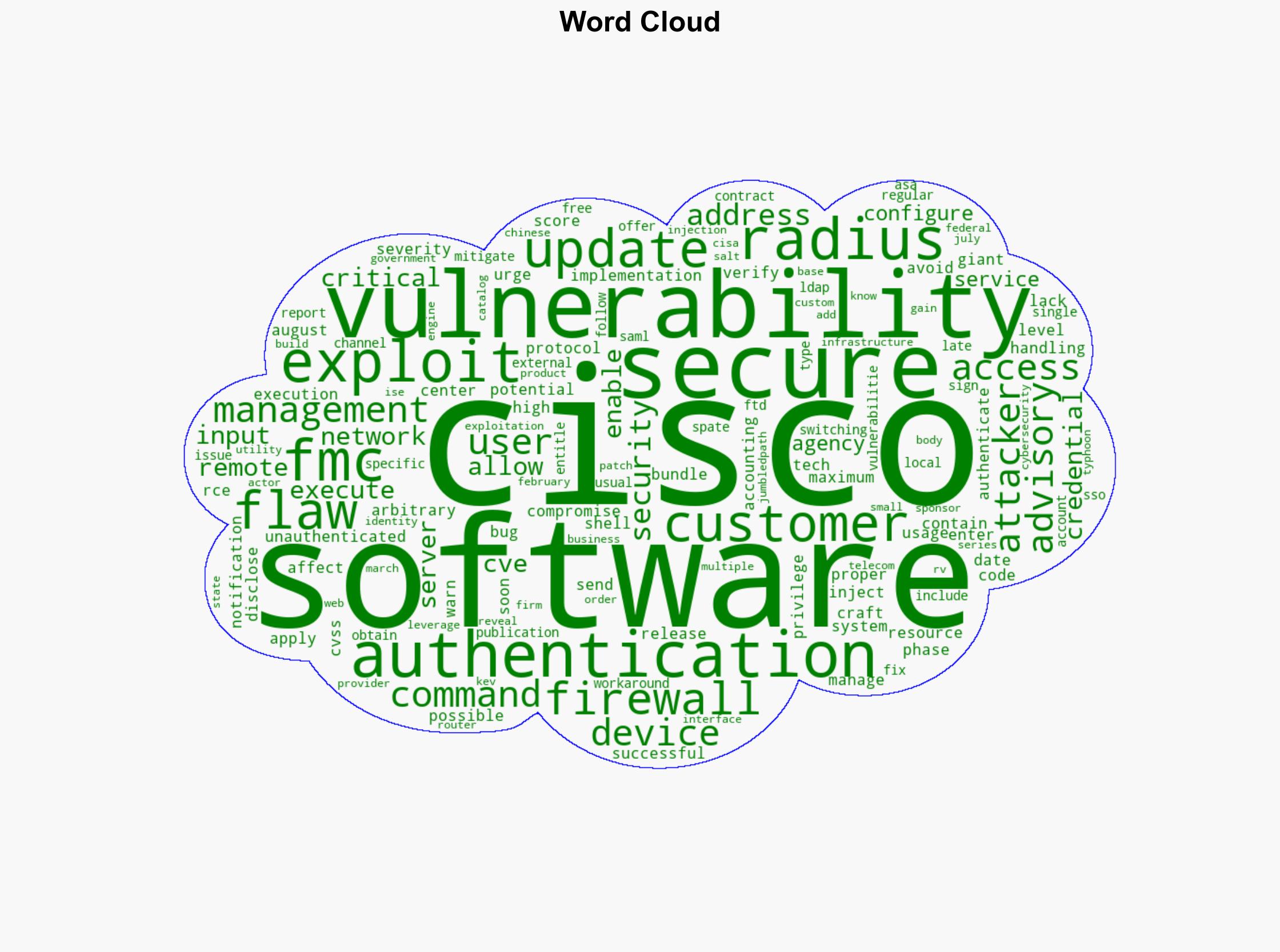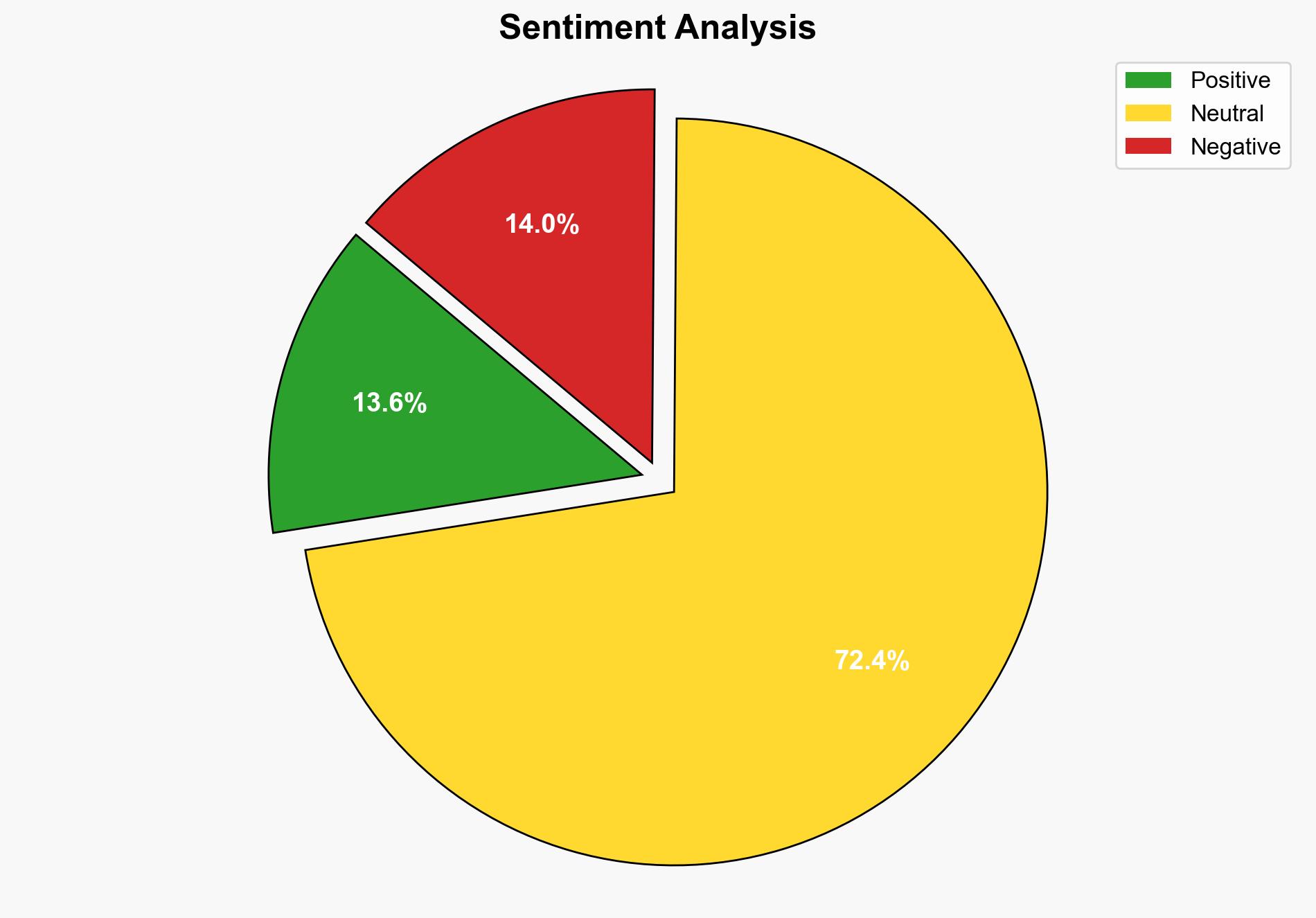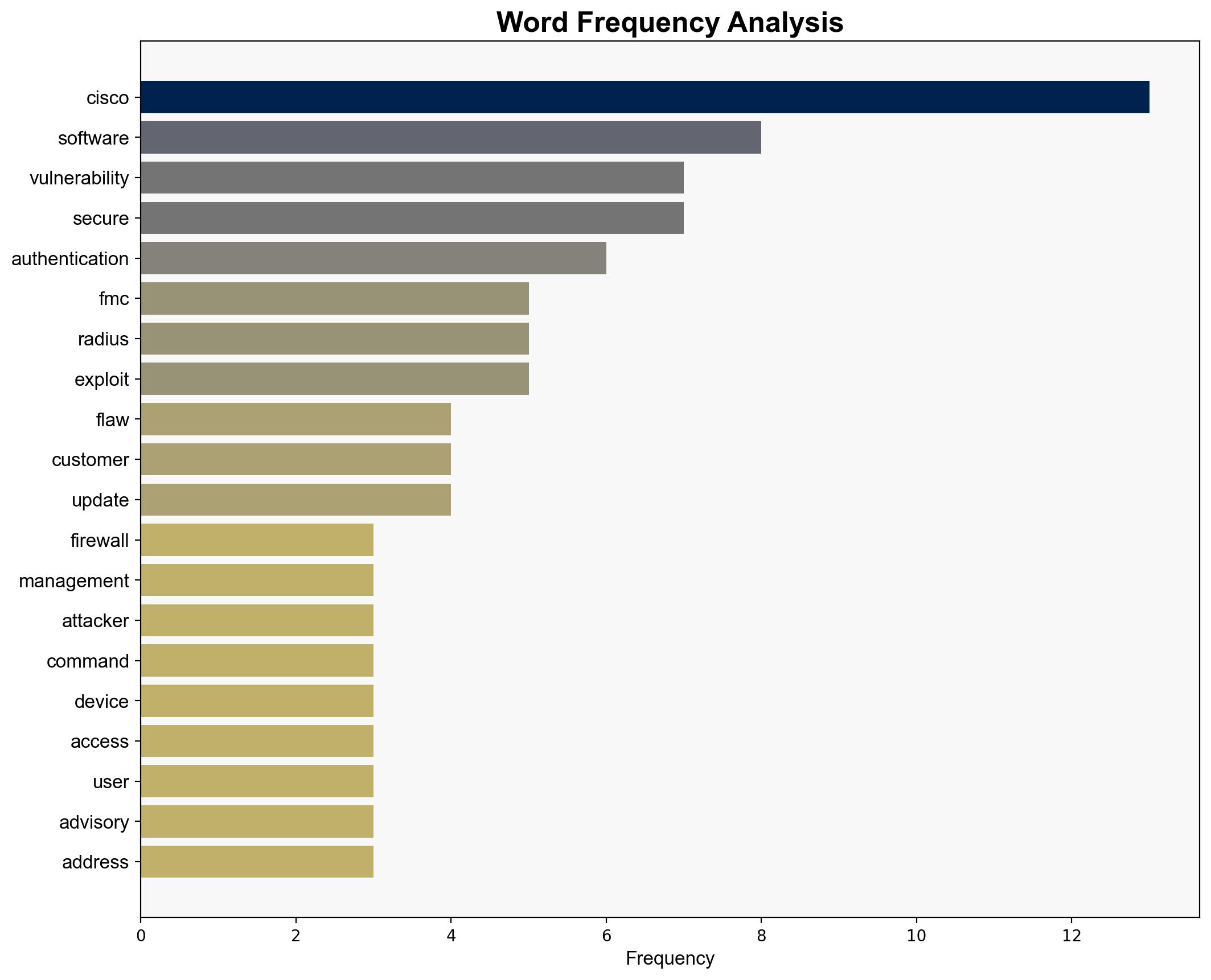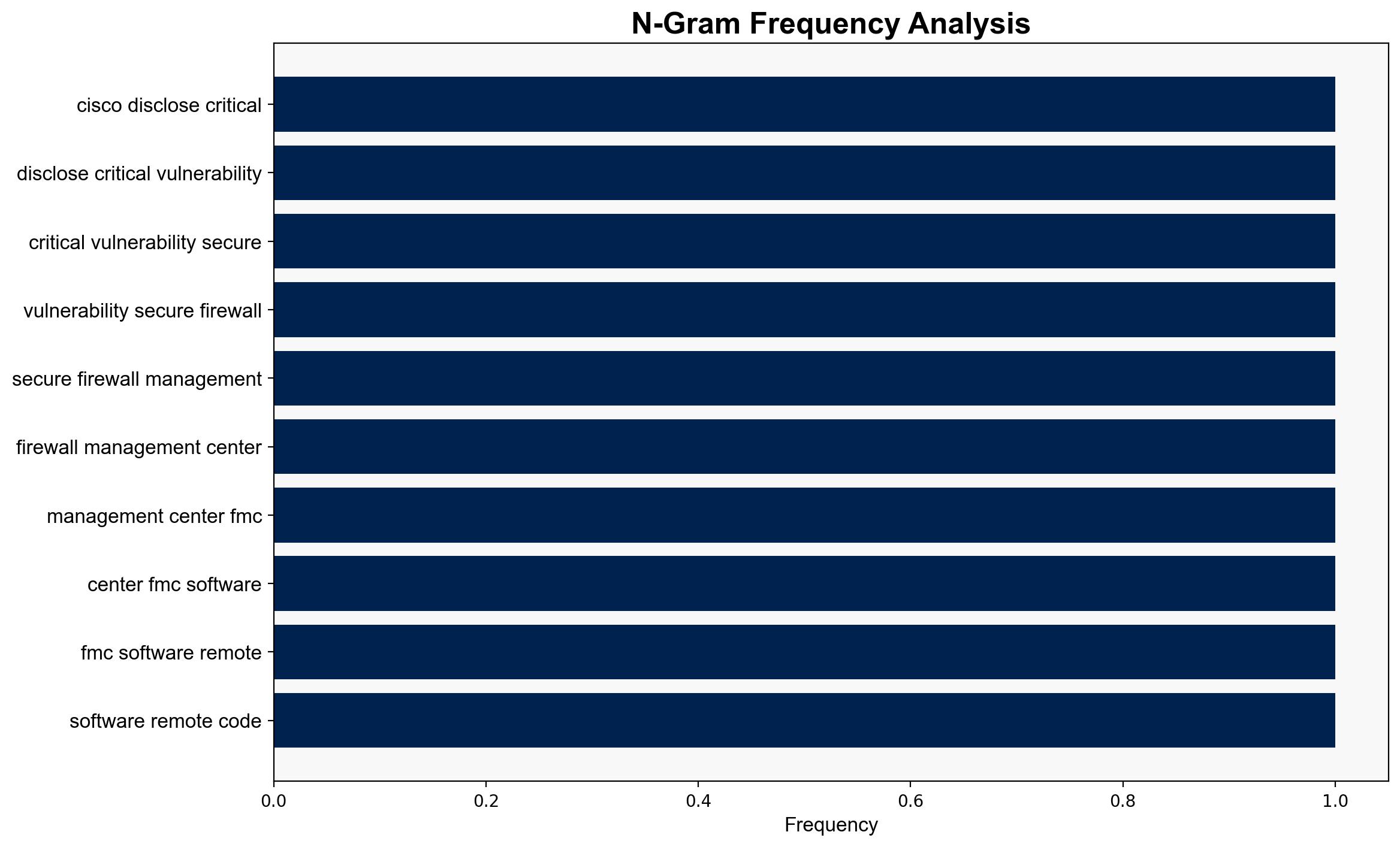Cisco Discloses Critical RCE Flaw in Firewall Management Software – Infosecurity Magazine
Published on: 2025-08-15
Intelligence Report: Cisco Discloses Critical RCE Flaw in Firewall Management Software – Infosecurity Magazine
1. BLUF (Bottom Line Up Front)
The disclosure of a critical Remote Code Execution (RCE) flaw in Cisco’s Firewall Management Center (FMC) software poses a significant cybersecurity risk, particularly to organizations using RADIUS authentication. The most supported hypothesis is that this vulnerability could be exploited by state-sponsored actors to gain unauthorized access to sensitive networks. Immediate patching and alternative authentication methods are recommended. Confidence level: High.
2. Competing Hypotheses
Hypothesis 1: The vulnerability will be primarily exploited by state-sponsored actors to infiltrate critical infrastructure networks.
Hypothesis 2: The vulnerability will be exploited mainly by cybercriminals for financial gain through ransomware or data theft.
Using ACH 2.0, Hypothesis 1 is better supported due to historical precedence of state-sponsored actors targeting Cisco vulnerabilities, as evidenced by the February incident involving Chinese actors. The strategic value of infiltrating critical infrastructure aligns more with state-sponsored objectives than with typical cybercriminal activities.
3. Key Assumptions and Red Flags
– Assumption: Organizations will promptly apply patches and switch authentication methods, which may not occur due to resource constraints or lack of awareness.
– Red Flag: The advisory’s timing coincides with recent exploitations of Cisco products, suggesting a possible increase in targeted attacks.
– Blind Spot: The full scope of affected devices and potential zero-day exploits remains unclear.
4. Implications and Strategic Risks
The vulnerability could lead to unauthorized access to critical infrastructure, potentially disrupting services and compromising sensitive data. This poses economic risks through potential operational downtimes and geopolitical risks if exploited by state actors. The psychological impact on public trust in cybersecurity measures could be significant.
5. Recommendations and Outlook
- Organizations should immediately apply the available patches and consider switching to local or SAML authentication methods.
- Conduct a thorough audit of network security protocols to identify and mitigate potential vulnerabilities.
- Scenario-based projections:
- Best Case: Rapid patch deployment and authentication method changes prevent any significant exploitation.
- Worst Case: State-sponsored actors exploit the vulnerability, leading to widespread network breaches and data theft.
- Most Likely: Mixed exploitation by both state-sponsored actors and cybercriminals, with isolated incidents of network breaches.
6. Key Individuals and Entities
– Cisco Systems
– Cybersecurity and Infrastructure Security Agency (CISA)
– Salt Typhoon (Chinese state-sponsored actor)
7. Thematic Tags
national security threats, cybersecurity, state-sponsored cyber activities, critical infrastructure protection




